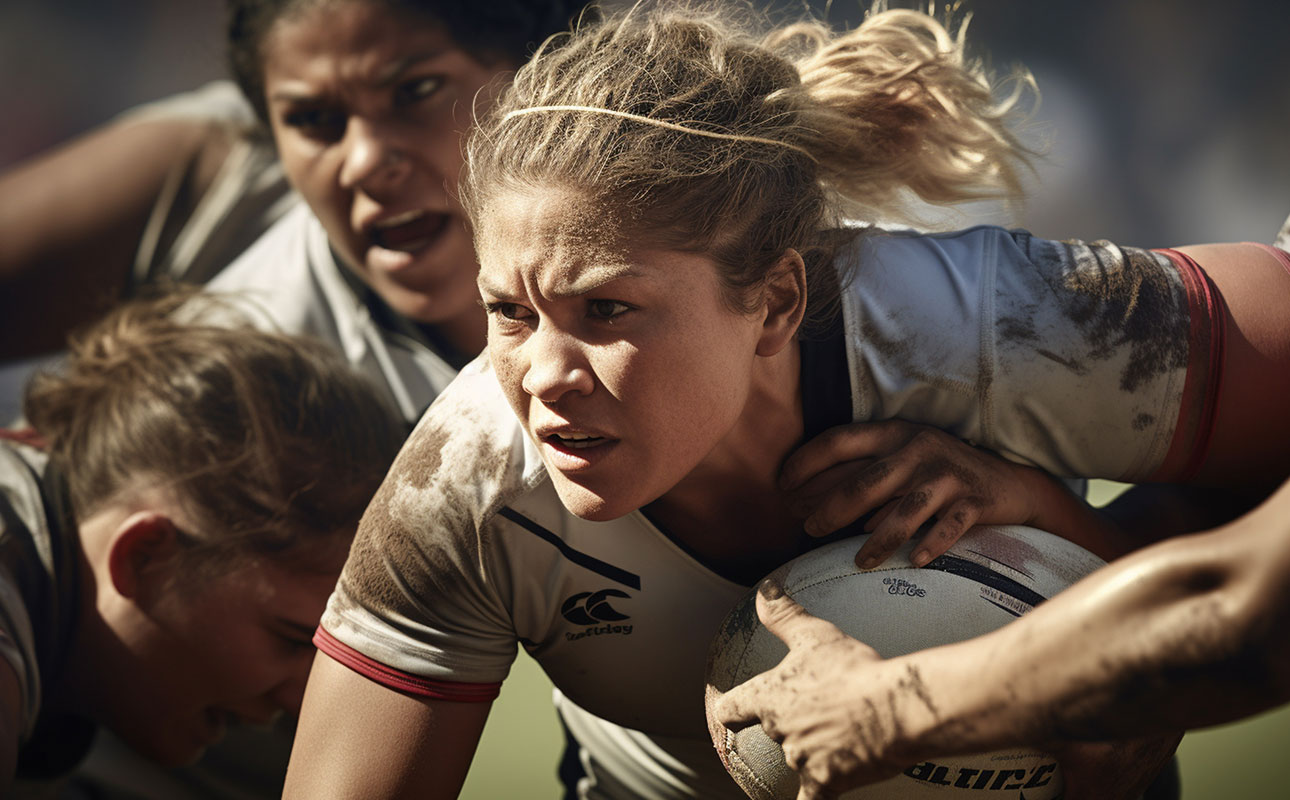
As the excitement builds for the Women’s Rugby World Cup2025, with England proudly hosting the tournament from 22 August to 27 September, all eyes are on the Red Roses, the world’s top-ranked women’s team, and the incredible athletes who will represent their nations on the world stage.
Whether you’re a seasoned club player, a rising academy athlete, or simply inspired to take up rugby, this is a huge moment for the sport, and a timely reminder of the importance of injury prevention, especially in women’s rugby.
At Atherapy, we’ve supported countless rugby players of all levels, and we’re here to help you play strong, smart, and safe.
The Most Common Injuries in Women’s Rugby
Research shows that women’s rugby has a higher injury rate in certain areas compared to men’s, particularly when it comes to non-contact knee injuries and concussion.
Here are the top five most common injuries in women’s rugby:
1. ACL Injuries (Knee Ligament Tears)
- Most frequent and often season-ending
- Occur typically during non-contact movements (e.g., sidestepping, deceleration)
- Women are up to 8x more likely to suffer an ACL tear than men
2. Concussions
- High prevalence, especially in tackles and rucks
- Often under-reported or mismanaged
3. Ankle Sprains
- Caused by quick changes of direction, landing awkwardly, or foot entrapment in scrums
4. Hamstring Strains
- Related to sprinting, kicking, or overload in training
5. Shoulder Injuries
- Dislocations and AC joint sprains from poor tackle mechanics or repeated contact
Why Women Are More Prone to Certain Injuries
There’s growing awareness of how female physiology, biomechanics, and hormonal factors influence injury risk. This includes:
- Greater knee valgus angles during landings
- Differences in muscle activation timing (especially hamstrings vs quads)
- Hormonal fluctuations affecting ligament laxity
That’s why prevention needs to be tailored.
Injury Prevention Strategies Backed by Science
1. Neuromuscular Warm-Ups
Implement a consistent warm-up program like FIFA 11+,modified for rugby. Focus on:
- Single-leg control
- Lateral movement
- Landing mechanics
- Core stability
Recommended: At least 15–20 minutes before every session or game
2. Strength & Power Training
Prioritise:
- Hamstring strength (e.g., Nordic curls)
- Glute activation
- Quadriceps-to-hamstring strength balance
- Upper body resilience (shoulders, neck, core)
3. Tackle Technique Coaching
Work closely with coaches or a physio-led program to:
- Improve tackle positioning
- Reduce head-first collisions
- Build confidence in contact
4. Menstrual Cycle-Aware Programming
Emerging research suggests injury risk may fluctuate during the cycle. Where possible, adjust:
- High-load activities in late follicular phase
- Recovery and mobility work in luteal phase
Our physios can help you track and adapt training cycles safely.
5. Physio Screening & Prehab
Book a Rugby Performance Screen at Atherapy to:
- Identify movement asymmetries
- Test balance, joint mobility, and strength ratios
- Design a prehab routine specific to your risk profile
Let’s Make This England’s Moment
With matches being played across cities like Sunderland,Brighton, Northampton, Exeter, Manchester, Bristol, York, and the grand final at Twickenham, this is a historic home tournament and a chance toelevate women’s rugby at all levels.
Whether you're preparing for your next season or simply inspired to lace up your boots, let’s make injury prevention as exciting as performance.
Ready to Play Stronger, Longer?
We’re offering pre-season injury prevention assessments throughout the Women’s Rugby World Cup. Book your session now and let us help you stay match-fit for 80 minutes and beyond.
Get in touch
Our team at Atherapy is here to support your recovery every step of the way.


